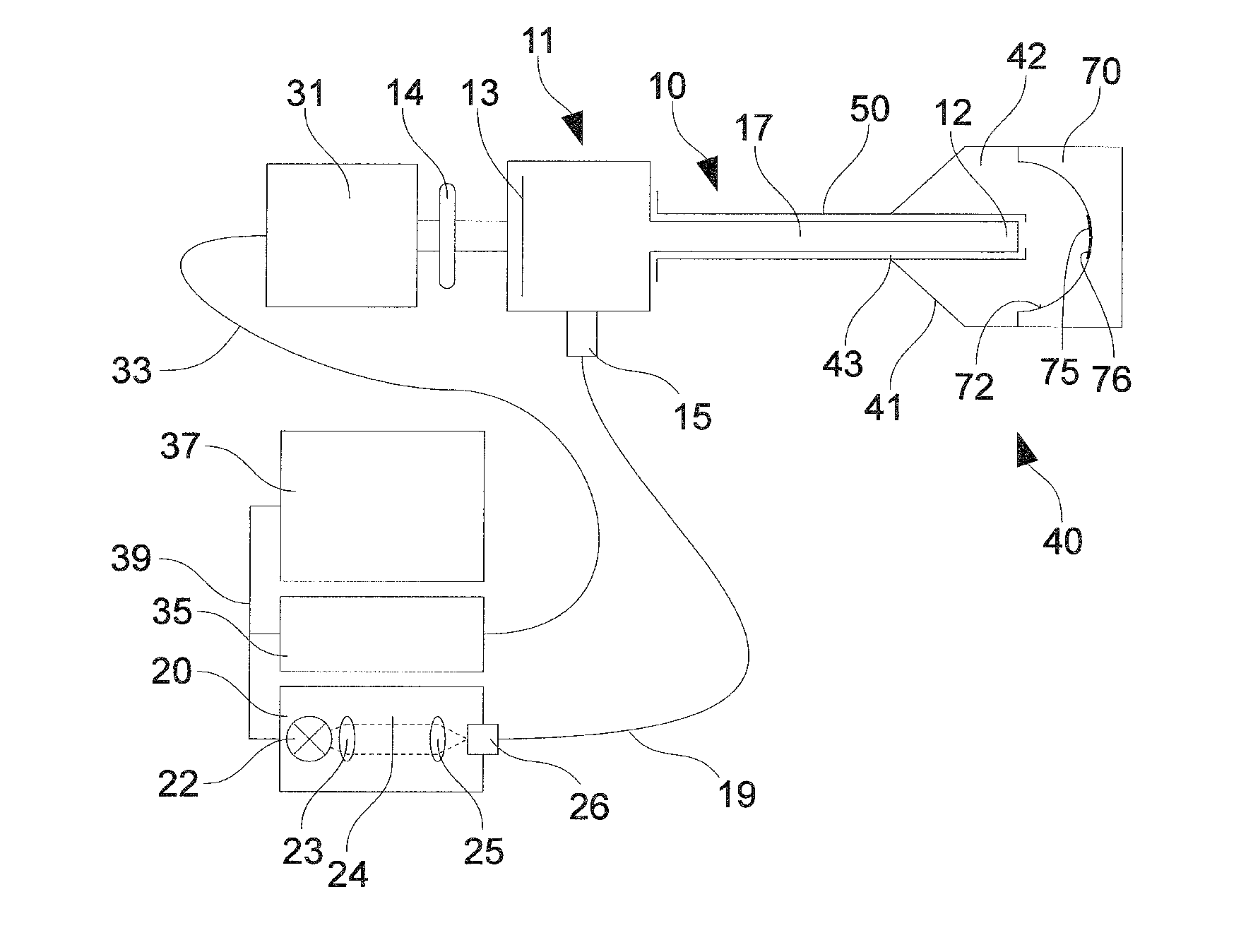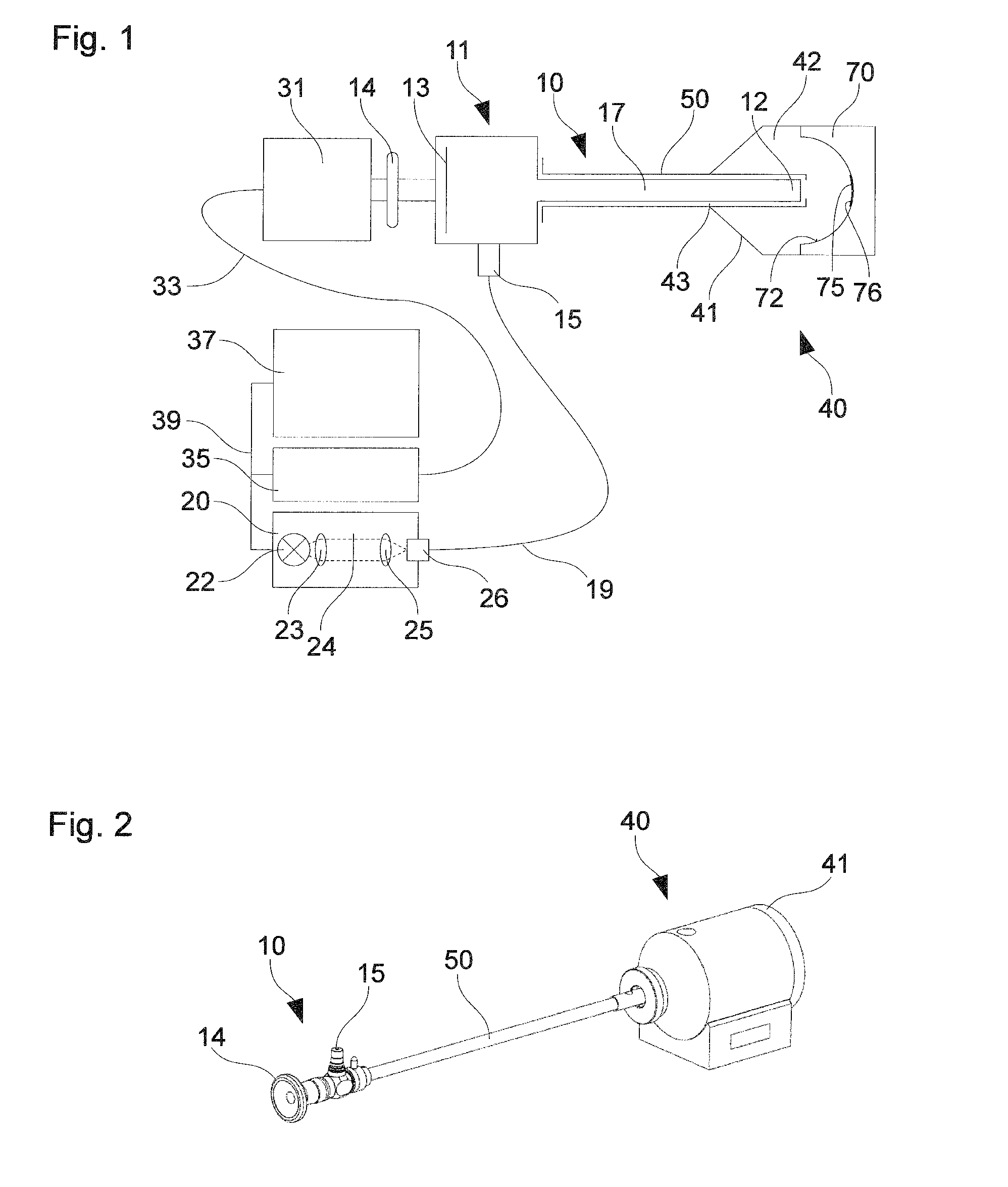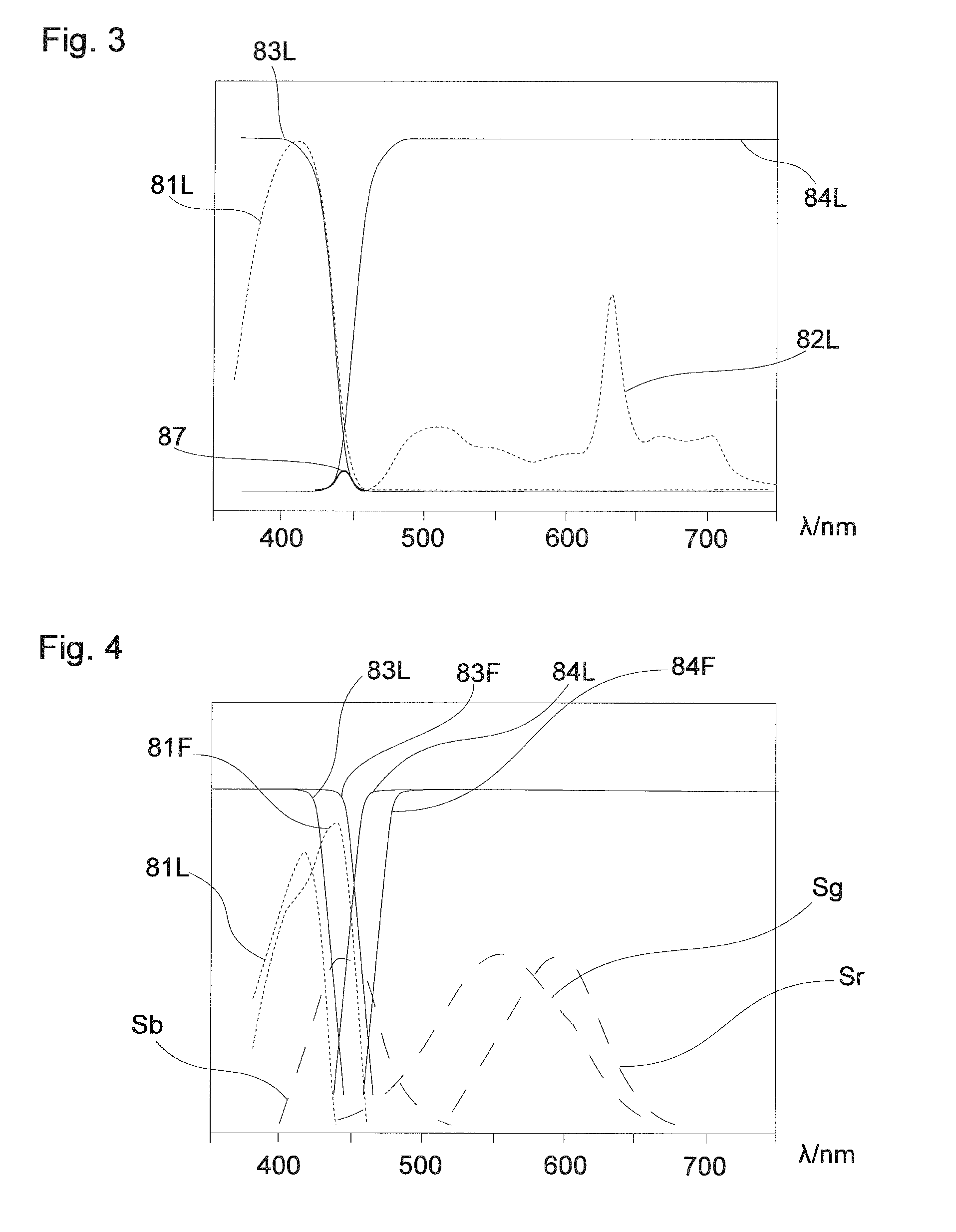Method for testing an optical investigation system
a technology of optical investigation and optical probe, applied in the field of optical investigation system testing, can solve the problems of frequent failure of sources, influence of endoscopy system functionality, source subject to alteration process,
- Summary
- Abstract
- Description
- Claims
- Application Information
AI Technical Summary
Benefits of technology
Problems solved by technology
Method used
Image
Examples
Embodiment Construction
[0062]FIG. 1 shows a schematic depiction of an optical investigation system. The optical investigation system in this example is an endoscopy system, which can be applied, for example, in medical-diagnostic methods in urology and in other specialties. The endoscopy system includes an endoscope 10 with a proximal end 11 and a distal end 12. The endoscope 10 includes an illumination or excitation beam path and an observation beam path, which are not shown in detail in FIG. 1. The illumination beam path includes in particular one or more lightwave conductors to transmit illumination or excitation light from the proximal end 11 to the distal end 12 and a light outlet on the distal end 12 through which illumination light can exit from the distal end 12 of the endoscope 10 in order to illuminate an object to be observed. The observation beam path includes a light inlet on the distal end 12 of the endoscope 10, a lens to transmit observation light emitted from an observed object, from the ...
PUM
 Login to View More
Login to View More Abstract
Description
Claims
Application Information
 Login to View More
Login to View More - R&D
- Intellectual Property
- Life Sciences
- Materials
- Tech Scout
- Unparalleled Data Quality
- Higher Quality Content
- 60% Fewer Hallucinations
Browse by: Latest US Patents, China's latest patents, Technical Efficacy Thesaurus, Application Domain, Technology Topic, Popular Technical Reports.
© 2025 PatSnap. All rights reserved.Legal|Privacy policy|Modern Slavery Act Transparency Statement|Sitemap|About US| Contact US: help@patsnap.com



